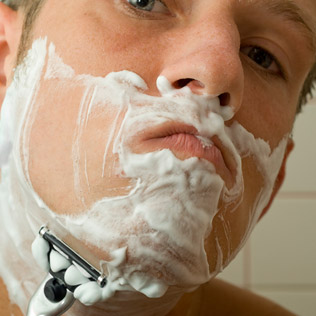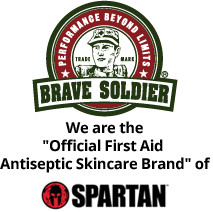
Your razor can be your best friend or your worst enemy. Like any other relationship, the one with your razor requires understanding and patience. We can help you out.
Do you consider shaving a painful chore? Are you glad when it's all over and you don't have to deal with it again, until tomorrow morning that it? Even though you've been doing it all your life, do you skip shaving occasionally because you just hate it? Or, are you one of the few people out there that actually enjoy shaving, that enjoy the process as much as the results?
Odds are, you're not in the "enjoy shaving" group. And there are probably a number of very good reasons why. For one, no one probably taught you how to shave properly when you first began. And if someone did, it's possible that they merely showed you, and didn't actually teach you (there is a difference). Also, whoever taught you may not have had it quite right himself - and probably went through what you're going through right now. On the other hand, you might just have sensitive skin, or reactions to common shaving products.
Whatever the reason is that causes you to dread this modern morning ritual, there are certainly some things that can be done to lessen, if not completely eliminate your distress. Here's a couple:
When to shave
It's best to shave after, or at the end of a shower, when your hair has been wet for at least five minutes. This is because wet hair is softer and easier to cut. With a good razor blade and the right technique, you should have no problems at all. If, on the other hand, you try to cut dry whiskers, you face the risk of pulling the hair up from its follicle and having it snap back under the skin, where it can grow crookedly, not able to exit the follicle, thus causing ingrown hairs. And ingrown hairs are no fun at all. If you have sensitive skin there are a number of products that can make your life a whole lot easier.
How to shave
The most important rule is "Easy Does It"
Hold the razor gently; let the blade do the work. A soft touch goes a long way, giving you a safe, comfortable shave. If you haven't shaved for a few days, you'll want to make sure to use a new blade. Also, keep in mind that these days, razors have multiple blades, so let them do their job. The number of blades may seem arbitrary and at times a case of product one-upmanship, but all these companies spend millions of dollars on R&D, and we get the benefits.
Go with the flow
Most shaving problems are self-inflicted. Caused by rushing, not using enough warm water, or just the wrong technique. It's best to shave with light downward strokes, along the "grain" - that is, in the same direction as the hair grows - so that you don't cut the hair too short. Shaving upwards can cause the hair to snap back and retract under the skin, causing irritation and razor bump problems. If you absolutely need to shave against the grain, make sure you do so with extra lubrication, utilizing light upward strokes after you have made an initial pass downward.
Everything in moderation
Do not over shave. Going over and over the same area on your face or body with a razor can cause the hair to be cut too short, again resulting in ingrown hairs, razor bumps, or skin irritation. Shave what you need to, but go easy, overlapping only where you have to.
Let it be
Try to avoid stretching your skin when you shave. Even though it sometimes feels easier to do so, the best way to shave is to leave your skin as it is - neutral and relaxed. Tightening and pulling the skin can cause hairs to be shaved below the resting surface of the skin - again, cutting them too short can cause skin irritation and other problems. At times you may have to pull your skin a bit to get the razor over a patch smoothly. In these cases go ahead, just don't make a habit of it.
It's electric
If you are prone to skin irritation, razor bumps, or ingrown hairs, be careful with electric shavers. Rotary blades cut hair at different angles and horizontal screen blades cut from side to side. Both are not the ideal situation. If you do use an electric razor, make sure you don't stretch your skin when shaving. Pulling at your skin can cause "razor burn" from the vibrating blades and can also make hair can snap back under the skin, causing skin irritation and other problems. If you're going to use an electric razor, choose a wet/dry device and use it in the shower for a closer shave. Also, remember to shave gently, let the machine do the heavy lifting.
Be kind to your skin
If you do get shaving irritation, it's really important to let the irritated area heal before you drag your razor over it again, making it worse. Shaving over skin abrasions can lead to scarring and severely impacted ingrown hairs that get trapped in the healing process. So don't. If you absolutely have to shave, make sure to use a healing ointment, or other antiseptic product on any irritated are, nicks or cuts.
Avoid alcohol
Stay away from after-shave products with high alcohol or perfume content, these can dry out the skin. They can also occasionally cause pigmentation problems on the lower face and neck.
Protection from the sun
Always Use Sunscreen. It's that simple. Sunscreen helps to prevent hyper-pigmentation, skin cancer and premature aging.
